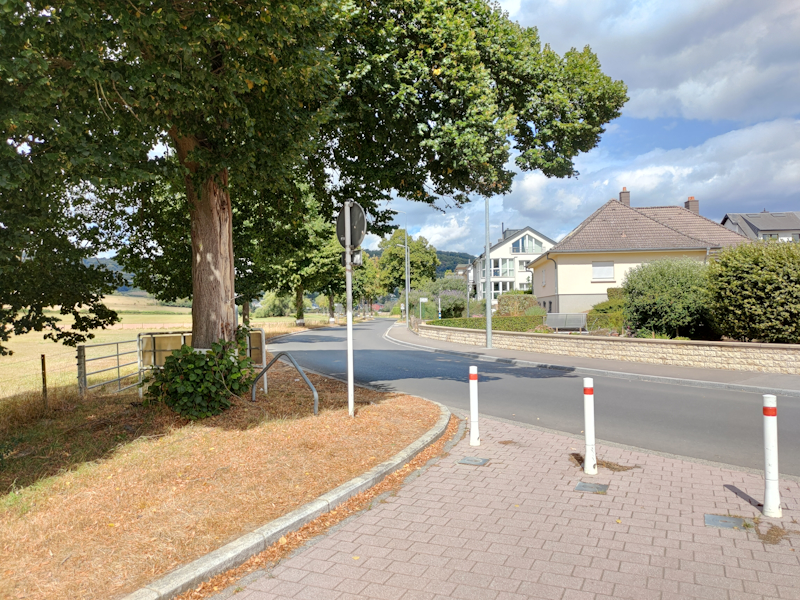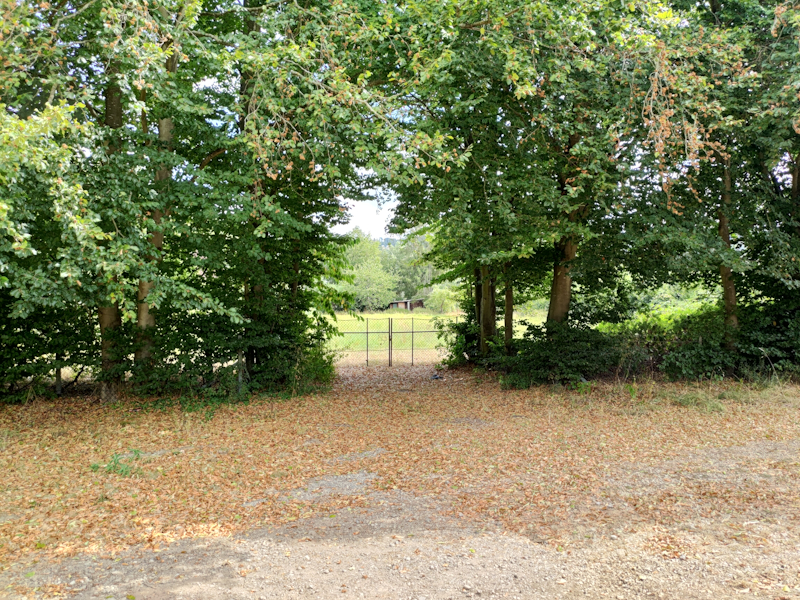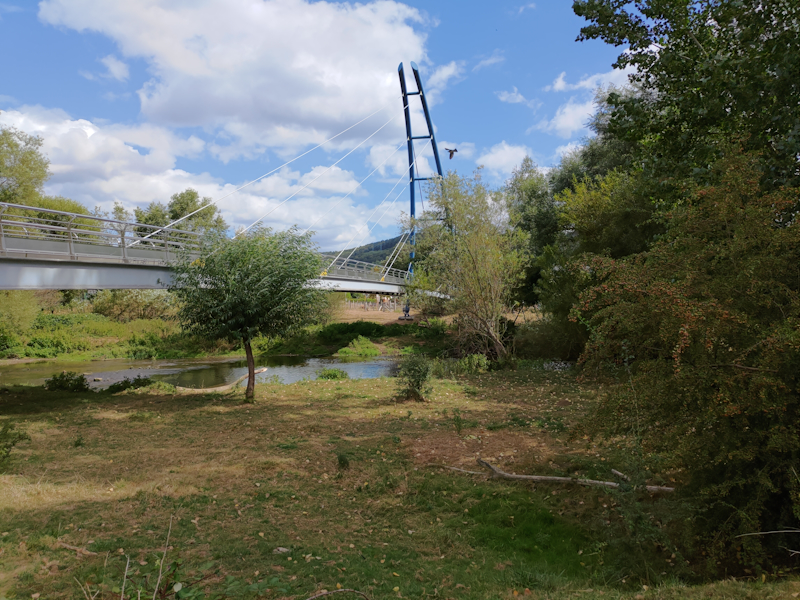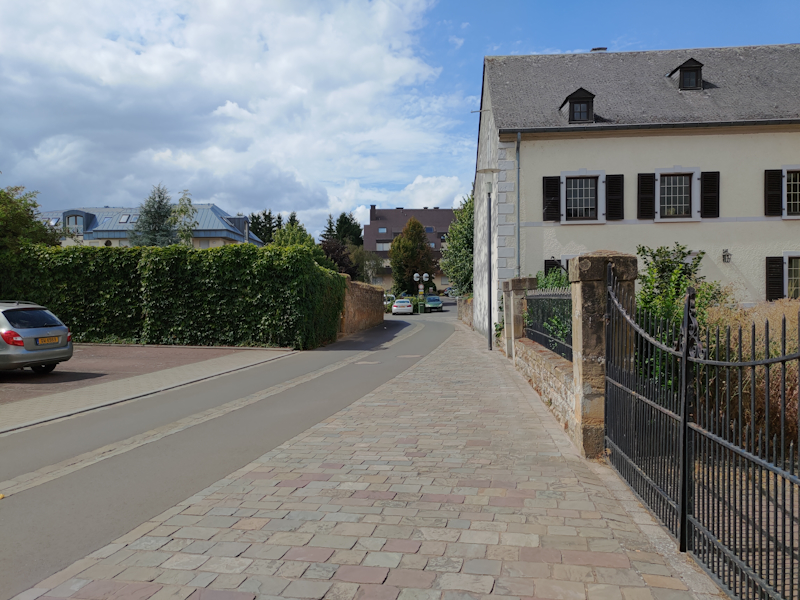The ASUS ZenFone 7 Pro Review: The Triple Flip-Camera
by Andrei Frumusanu on September 1, 2020 3:00 AM EST- Posted in
- Mobile
- Asus
- Smartphones
- ZenFone 7
- ZenFone 7 Pro
Camera - Daylight Evaluation
The cameras on the ZenFone 7 certainly make for a unique aesthetic feature of the phone, but ASUS has also put some effort into upgrading the camera hardware, and the phone certainly boasts the most advanced setup that the company has put into a smartphone.
The main camera sensor is the same that we saw on the ROG3, which is the Sony IMX686 with 64MP and 0.8µm pixels, 4:1 binning down to 16MP 1.6µm in regular shooting modes. The aperture here is f/1.7 which is actually larger than that of the ROG3 so it looks like we’re dealing with different optics on the ZenFone. Finally, the Pro version we’ve tested today also has OIS.
The ultra-wide module of the phone features a newer generation IMX363 sensor with 1.4µm pixels. This is bigger than the unit on the ROG3 and is really only matched by Samsung’s S20 series for an UWA of this wide field of view at 113°. The aperture also is larger at f/2.2 than the f/2.4 of the ROG3.
Finally, ASUS has employed an 8MP telephoto module with 3x optical magnification. Due to the size constraints of the flip-camera housing the sensor is likely to be quite small both in terms of its physical size and pixels.

[ Zenfone 7 Pro ] - [ ROG Phone III ]
[ iPhone 11 Pro ] - [ Galaxy S20+(E) ]
[ Pixel 4 ] - [ X-T30 ]
In the first scene, if we’re comparing the ZenFone to the ROG3 at first glance they seem similar, however upon closer inspection we see that the ZenFone has a quite different look to it when it comes to detail. It looks like the ZenFone was able to retain more dynamic range, with highlight textures not quite as flattened out, and with better shadow detail.
Generally, against the competition, the overall exposure is still quite lacking as textures are still lacking contrast, again likely due to the higher exposure and HDR processing.

[ Zenfone 7 Pro ] - [ ROG Phone III ]
[ iPhone 11 Pro ] - [ Galaxy S20+(E) ]
[ Pixel 4 ] - [ X-T30 ]
The next shot showcases quite a lot of processing differences with the new ZenFone as it’s able to handle colour temperature more accurately than the ROG3, as well a the HDR also doing a better job.
The most shocking difference however is in the detail-retention as there’s a significant increase in sharpness in the ZenFone. Although both devices look similar in the centre of the image, the outer frame and edges aren’t comparable at all as the ZenFone pulls away from the disaster that was the ROG3’s blurry optics.
Using the 64MP picture mode here might make more sense, but it’s very weird that the phone here in this mode decided for an exposure 4x as slow as the default 16MP mode, and subsequently looks a bit flat.
The telephoto camera detail-wise is very good and provides more than sufficient resolution, producing a very competitive result in that regard. The foreground here is a bit darker than I’d have wished so the dynamic range isn’t quite as strong.

[ Zenfone 7 Pro ] - [ ROG Phone III ]
[ iPhone 11 Pro ] - [ Galaxy S20+(E) ]
[ Pixel 4 ] - [ X-T30 ]
The ultra-wide processing is much better on the ZenFone 7 compared to the ROG3, resulting in a more balanced exposure. The phone still struggles though to retain textures in sunlight as the grass is really lacking contrast when compared to say the S20, with both phones having similar class modules and sensors.

[ Zenfone 7 Pro ] - [ ROG Phone III ]
[ iPhone 11 Pro ] - [ Galaxy S20+(E) ]
[ Pixel 4 ] - [ X-T30 ]
An interesting aspect of devices which employ higher magnification telephoto modules is how they handle intermediary zoom levels which are still relegated to the main camera sensor. In ASUS’ case here on the ZenFone 7 we’re seeing an interesting approach, as the phone is seemingly fusing together pixel data from both the 16MP and 64MP modes. You can see this in the 2x shot in the vegetating which has ghost exposures due to them moving in the wind.
The result is somewhat adequate but can’t compete with real 2x modules, or native high-res modules such as the second wide-module of the S20.

[ Zenfone 7 Pro ] - [ ROG Phone III ]
[ iPhone 11 Pro ] - [ Galaxy S20+(E) ]
[ Pixel 4 ] - [ X-T30 ]
Sometimes when the lighting conditions are kind, the ZenFone is able to produce extremely pleasing images in terms of exposure. This scene was good on all of the phone’s modules and very competitive against all other devices.

[ Zenfone 7 Pro ] - [ ROG Phone III ]
[ iPhone 11 Pro ] - [ Galaxy S20+(E) ]
[ Pixel 4 ] - [ X-T30 ]
Unfortunately, that’s not always the case as ASUS’s processing still has a ton of trouble with exposure and HDR. This shot here was overcast at the moment of capture, but the result still looks way to dark and flat, lacking any kind of highlights in the scene and little dynamic range.

[ Zenfone 7 Pro ] - [ ROG Phone III ]
[ iPhone 11 Pro ] - [ Galaxy S20+(E) ]
[ Pixel 4 ] - [ X-T30 ]
In this scene the processing also fell flat on its face on the main camera, and is actually much worse than what we see on the ROG3. Ironically, the ZenFone’s ultra-wide produces a much better exposure and doesn’t decimate textures into flat colour palettes.
Daylight Capture Conclusion - Solid Foundation, Processing Needs Work
Overall, the ZenFone 7 Pro fared quite a bit better than the ROG Phone III and showcases a more usable camera experience. The optics on the ZenFone are much improved and nowhere near the disaster that was the ROG3.
The new ultra-wide and telephoto modules actually performed quite well in the tests, and both are respectable in their capture abilities.
ASUS’s biggest weakness is processing, and although it seems the ZenFone improves thing a bit, many times it still really falls flat on its face with exposure and HDR, many times producing very flat-looking images that have lost a ton of texture contrast. Because of this, I can’t really say that’s it’s a competitive camera as essentially all other camera vendors will be able to outperform the ZenFone 7.










31 Comments
View All Comments
JfromImaginstuff - Tuesday, September 1, 2020 - link
Seriously, doing away with the headphone jack in exchange for 5G. Might as well go with Samsungs.yu - Tuesday, September 1, 2020 - link
Yeah they say 5G antennas are small, sometimes they omit the fact that you need more than a dozen of them.melgross - Tuesday, September 1, 2020 - link
You need from three to five, depending on whether you’re using sub mm bands or not, not dozens.Quantumz0d - Tuesday, September 1, 2020 - link
It's 100% b.s LG V60 and Sony Xperia Mark II both of them are 5G and LG even has full U.S band support with mmWave technology as well and has a superior Audio performance from the standalone RFI shielded high end ESS9219 DAC chipset (ESS9218P was being featured in LG phones from V30 and up) and both of them have IP68 rating along with Qi charging too. The fact that Note 20 gets a full blown Silo for the S-Pen makes so fucking ground for these lying bastards. Removing jack is saving pennies and forcing them to buy accessories which also die out due to the Li-Ion technology.5j3rul3 - Tuesday, September 1, 2020 - link
Can anyone describe how to understand the ∆E ITP and ∆E ITP LC value?I did use ∆E 2000 with Gamma 2.2 for long time, but even searching in google, the data just saying about Rec.2100, EOTF, PQ, HLG and ITU-R....
I knew ∆E ITP is a part of Rec.2100 HDR...but, the info I really want to know is the relationship between ∆E ITP (LC) and real world.
∆E 2000 < 1:Great and almost perfect
∆E 2000 < 2:so hard to see the difference and it's good enough for professional users
∆E 2000 < 3:good for general users
∆E 2000 < 5:ok for general users but still has noticebal color difference
∆E 2000 > 7:esay to see the color difference
Can ∆E ITP and ∆E ITP LC use those standards (0 ~ 1 ~ 2 ~ 3 ~ 5 ~ 7 ~)?
Andrei Frumusanu - Tuesday, September 1, 2020 - link
dE ITP is a new standard that takes into account more modern reproduction formats such as HDR. Generally ITP is a little more sensitive than the 2000 standard to colour deviations: https://kb.portrait.com/help/about-deltae-edE ITP LC as I use it in the new reviews is simply a luminance compensated value, meaning that the error value ignores the luminance error and only looks at hue and chromacity. This makes sense for example in this review here as the ZenFone is targeting a 2.4 gamma by default, however our measurements are against a 2.2 gamma target. So the dE LC values are always going to be lower since it ignoers that part of the colour inaccuracy.
Under dE ITP of 1 it's imperceptible, under 3 it becomes acceptable when not viewed next to each other, and over 10 means it's horribly wrong.
5j3rul3 - Thursday, September 3, 2020 - link
Thank you @Andrei, the reply is really helpful!!!Now I can read the Calman's color calibration charts and info well based on that very useful knowledge, and easy to judge which device can provide great display quality.
Two more things I was wondering in this article:
1. The devices that Anandtech had reviewed such as Mate 20, iPhone XR, Xperia 1 even Surface Pro or XPS13, will get the updated display quality review based on the new delta ITP (LC) standard?
2. ASUS ZenFone 7 Series has a telephoto camera that has very similar spec to HUAWEI and Honor devices' (OV8856, 1/4.4", 1 um, F2.2, 80 mm{, OIS}, with terrible PDAF). It brings 3X Optical Zoom to ASUS smartphone first time and I'm expecting the 3X OZ camera can shows on ZenFone 7 Pro's review. This will be interesting if we have a comparison between ZF7P, 1+7P, M30P, P30 those who having a 3X OZ camera.....is there any opportunity to see this kind of comparison?
in the end, I really thank to AnandTech's great quality reviews!!!
shabby - Tuesday, September 1, 2020 - link
"This is something that ASUS actively acknowledges as being a deliberate design choice so that that they could fit in more components and a larger battery"Did they forget about the headphone jack?
drexnx - Tuesday, September 1, 2020 - link
>made phone huge for more componentsoh yeah we couldn't throw the 3.5mm jack in there, not enough room. The 5 gees, you know, they take up too much space.
Hamm Burger - Tuesday, September 1, 2020 - link
I thought that the unexpectedly low battery life might be because this phone did mm-wave 5G. Bit no: having dug up the specs, the highest 5G frequency band it can handle is 3.3–4.2GHz.